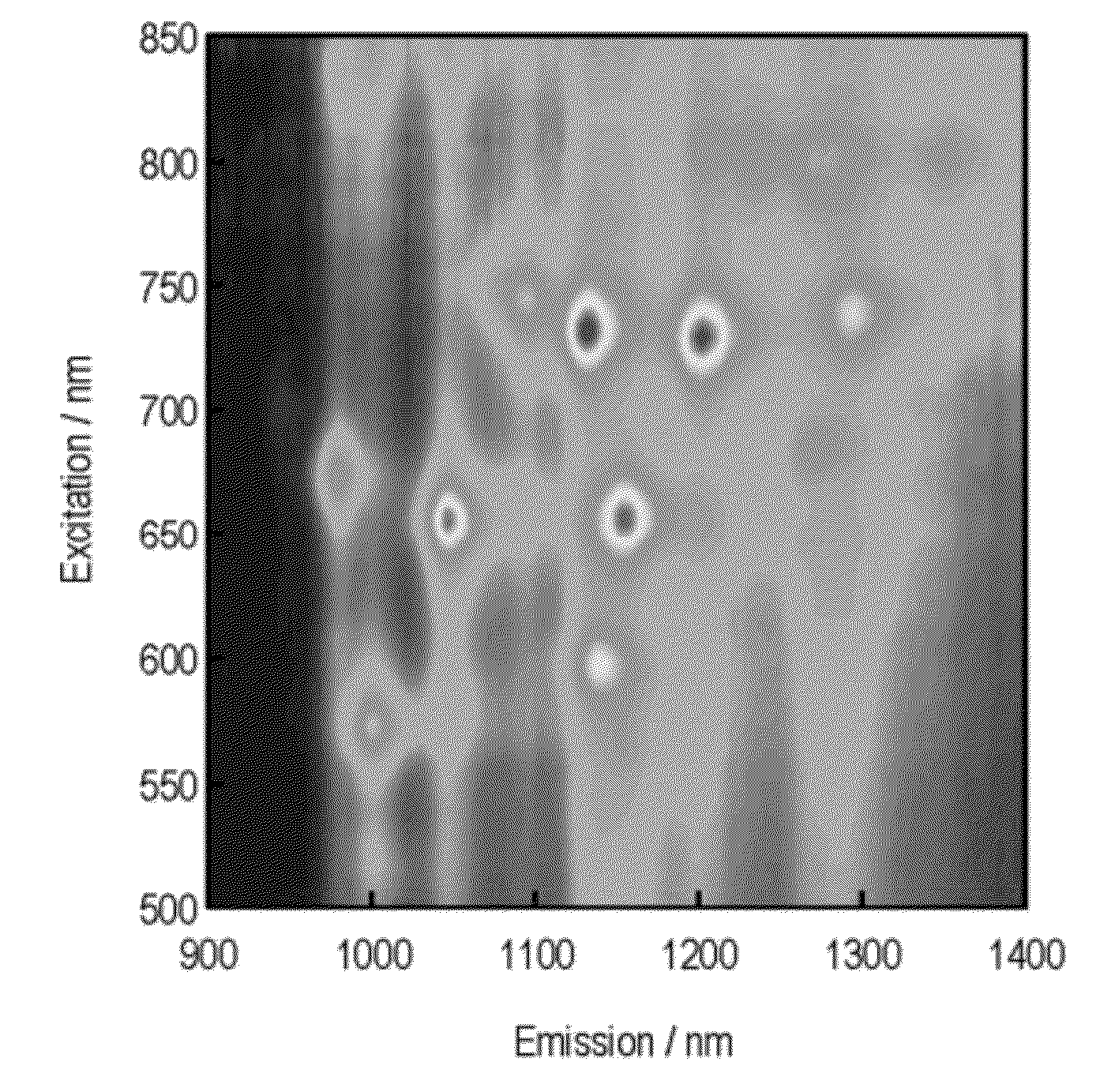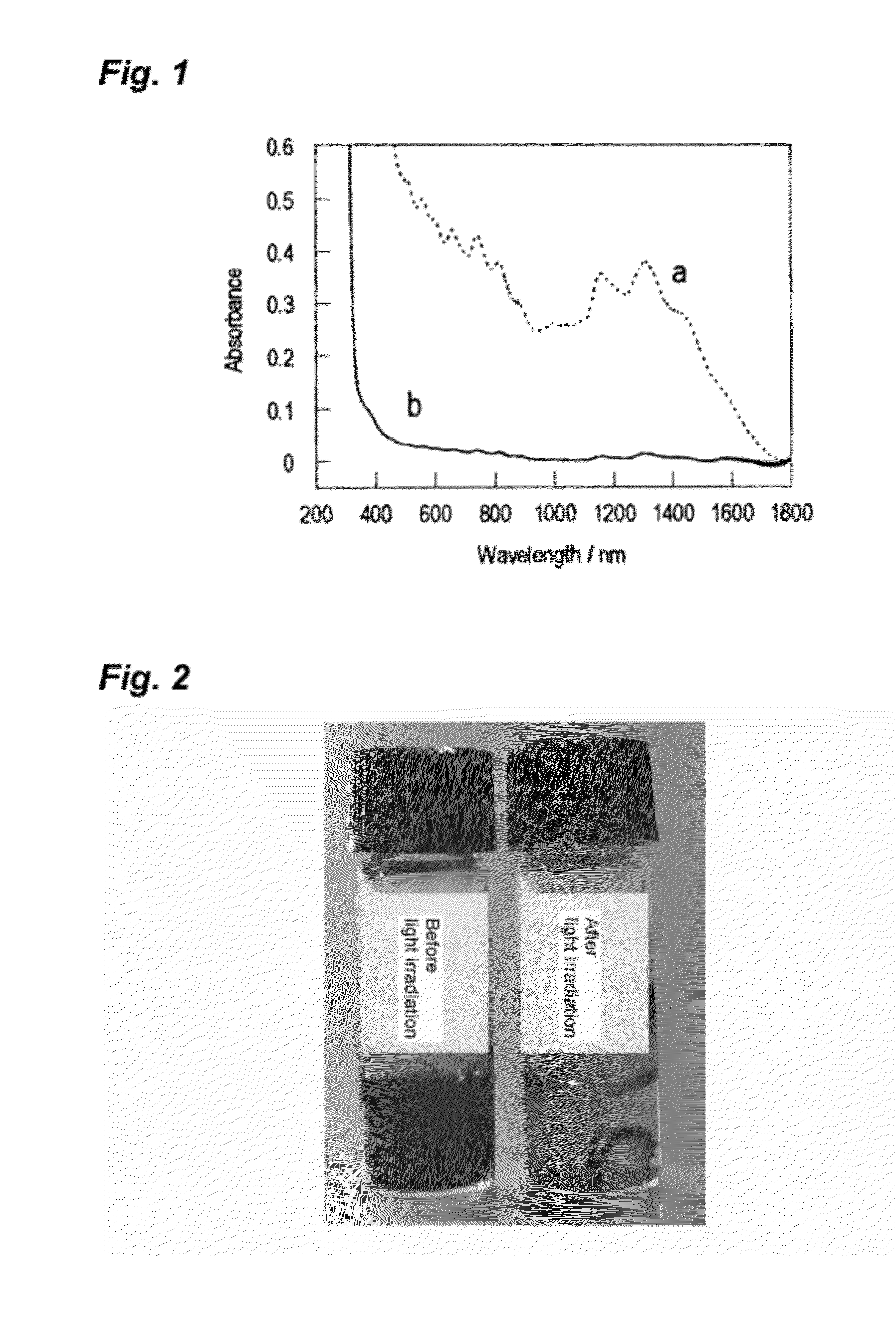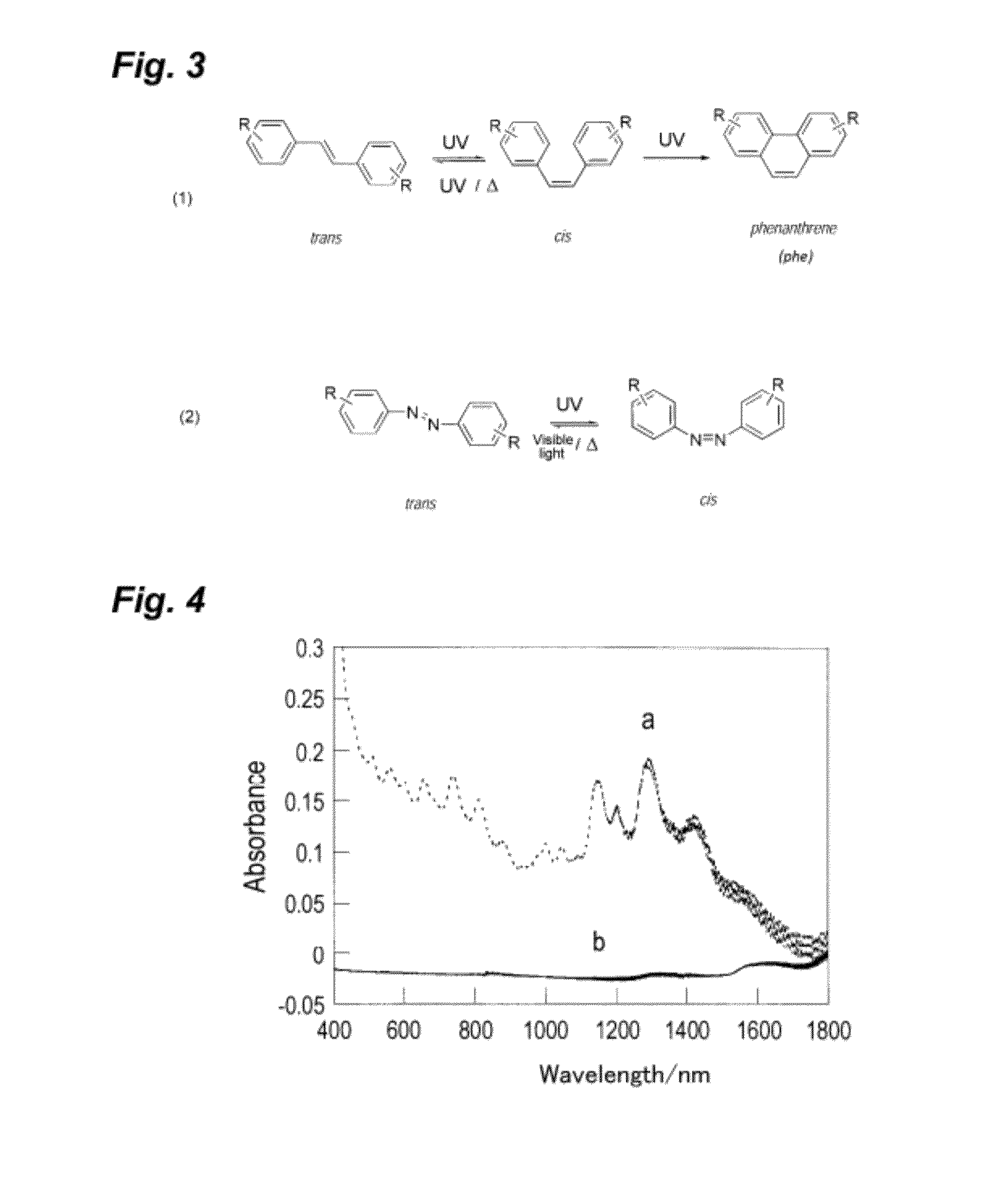Photoresponsive ionic organic compound, method of producing the same, and photoresponsive carbon nanotube dispersant comprising said ionic organic compound
- Summary
- Abstract
- Description
- Claims
- Application Information
AI Technical Summary
Benefits of technology
Problems solved by technology
Method used
Image
Examples
example 1
[0049]m-Nitroaniline (6 g, 0.04 mol) and ethylenediamine (15 g, 0.3 mol) were placed in a pressure-resistant sealing flask, followed by heating at 150° C. for 22 hours. The thus-obtained reaction product was dispersed in water, followed by separating the resultant precipitate by filtration, to give a crude product. The crude product was purified by silica gel column chromatography (ethyl acetate:hexane=5:1), to give the target compound represented by formula (2) as a yellow powder. Yield was 0.69 g, 10%. The structure of the thus-obtained compound was identified by the 1H NMR spectrum of the compound.
[0050]1H-NMR (300 MHz, DMSO-d6, δ) 5.39 (s, 4H), 6.71 to 6.74 (m, 2H), 7.01 to 4.07 (m, 4H), 7.18 to 7.23 (m, 2H)
[0051]The compound represented by formula (2) (0.64 g, 3.0 mmol) and triethylamine (0.67 g, 6.6 mmol) were dissolved in dehydrated methylene chloride (50 mL). Thereto, a solution of 4-chloromethylbenzoyl chloride (1.13 g, 6.0 mmol) in dehydrated methylene chloride (50 mL) was...
example 2
[0057]The ionic organic compound represented by formula (5) was obtained in the same manner as in Example 1, except that n-ethyldimethylamine was used in place of n-butyldimethylamine in Example 1. Yield was 85%. The structure of the thus-obtained compound was identified by the 1H and 13C NMR spectra of the compound.
[0058]1H-NMR (300 MHz, DMSO-d6, δ) 1.37 (t, J=7.0 Hz, 6H), 2.98 (s, 12H), 3.38 to 3.40 (m, 4H), 4.62 (s, 4H), 7.60 to 7.65 (m, 2H), 7.70 to 7.76 (m, 6H), 8.01 (d, J=8.0 Hz, 2H), 8.17 (d, J=8.2 Hz, 4H), 8.48 (s, 2H), 10.73 (s, 2H)
[0059]13C-NMR (75 MHz, DMSO-d6, δ) 7.91, 48.22, 60.84, 62.30, 113.28, 119.11, 122.51, 128.15, 129.60, 131.48, 132.95, 135.86, 140.04, 152.11, 165.00
example 3
[0060]The target compound represented by formula (6) was obtained in the same manner as in Example 1, except that 4,4′-diaminoazobenzene was used in place of the compound represented by formula (2) in Example 1. Yield was 4.65 g, 89%. The structure of the thus-obtained compound was identified by the 1H and 13C NMR spectra of the compound.
[0061]1H-NMR (300 MHz, DMSO-d6, δ) 4.86 (s, 4H), 7.62 (d, J=8.4 Hz, 4H), 7.92 (d, J=8.9 Hz, 4H), 7.99 to 8.05 (m, 8H), 10.60 (s, 2H)
[0062]13C-NMR (75 MHz, DMSO-d6, δ) 45.31, 120.40, 123.16, 128.12, 128.74, 134.41, 14123, 141.82, 147.87, 165.35
[0063]The ionic organic compound represented by formula (7) was obtained in the same manner as in Example 1, except that the compound represented by formula (6) was used in place of the compound represented by formula (3) and that n-hexyldimethylamine was used in place of n-butyldimethylamine in Example 1. Yield was 83%. The structure of the thus-obtained compound was identified by the 1H and 13C NMR spectra of...
PUM
| Property | Measurement | Unit |
|---|---|---|
| Temperature | aaaaa | aaaaa |
| Volume | aaaaa | aaaaa |
| Volume | aaaaa | aaaaa |
Abstract
Description
Claims
Application Information
 Login to View More
Login to View More - R&D
- Intellectual Property
- Life Sciences
- Materials
- Tech Scout
- Unparalleled Data Quality
- Higher Quality Content
- 60% Fewer Hallucinations
Browse by: Latest US Patents, China's latest patents, Technical Efficacy Thesaurus, Application Domain, Technology Topic, Popular Technical Reports.
© 2025 PatSnap. All rights reserved.Legal|Privacy policy|Modern Slavery Act Transparency Statement|Sitemap|About US| Contact US: help@patsnap.com



